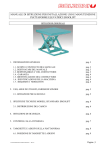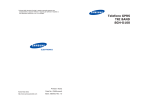Download 960041E, AR User Manual, English
Transcript
User Manual Series AR Series ARC 960041E Rev. 09/08 9. Safety Instructions WARNING!!! ! Know the capacity and limitations of your machine. Do not overload the lift truck or the clamp attachment. Please note that the rated capacity of the truck/attachment combination may be less than the capacity shown on the attachment nameplate. The lift truck manufacturer is responsible for calculating the rated capacity for the combination. See the lift truck nameplate for more information. WARNING!!! Never stand on the clamp attachment or on the load. WARNING!!! Never stand under a load or attachment. WARNING!!! Never stand in the attachment operating area or between the clamping arms. WARNING!!! Limit driving with a raised load to the minimum. Never accelerate or brake powerfully with a raised load. WARNING!!! Handle only those products that the attachment has been designed for. It is unsafe to lift any other objects. WARNING!!! Do not risk the lift truck stability by sideshifting or rotating. Sideshift only when the load is lowered down or near its seat. Use extreme caution when handling off-centre loads. WARNING!!! Always check the operating condition of the attachment before use. Never use a defective or damaged attachment. Repairs may be carried out by authorised personnel only. 960041E, User Manual, Series AR © Bolzoni Auramo Group, Auramo Oy, 2007, All Rights Reserved 2 Contents 1. Introduction 4 1.1 Notices 1.2 Safety Instructions 2. Installation Instructions 5 2.1 Truck Requirements 2.2 Handling and Transportation 2.3 Installation 2.4 Hose Flush 2.5 Connecting the Hoses 2.6 Checks Before Operating the Clamp 3. User Instructions 11 3.1 Clamping the Paper Roll 3.2 Rotating the Clamp 3.3 Tips for Safe Operation 4. Periodic Maintenance 16 4.1 Daily Checks 4.2 Inspection and Service 4.3 Tightening the Bolts 4.4 Recommended Lubricants (Greases) 5. Trouble-shooting 19 5.1 General 5.2 Safety Warnings 5.3 Hydraulic Circuit 5.4 Trouble-shooting 6. Service and Repairs 29 6.1 Service Instructions 960041E, User Manual, Series AR © Bolzoni Auramo Group, Auramo Oy, 2007, All Rights Reserved 3 9. 1. Introduction This manual contains installation, start-up and service instructions for the series AR and ARC paper roll clamps. All the instructions include metric and U.S. standard measurements Please read this manual carefully before using or servicing this equipment. This will ensure safe and error-free operation of the clamp attachment right from the start. Make sure that you know how the clamp works before attempting to use it. The instructions in this service manual do not replace any existing legislation in force in connection with safety or industrial injury. Abiding by such legislation is the responsibility of the truck user. The paper roll clamp has been designed and manufactured in accordance with basic safety requirements. It is the responsibility of the user to check the rating plates on the truck and the clamp and to ensure that they are used safely. 1.1 Notices There are three different levels of notices in this manual: WARNING!!! - These paragraphs contain information that will help to prevent injuries. CAUTION!!! - These paragraphs contain information that will help to prevent damage to the equipment. NOTE!!! These paragraphs contain information that will help in servicing the equipment. 1.2 Safety Instructions • Always check the operating condition of the clamp attachment before use. Never use a defective or damaged attachment. • Never stand under a load or clamp attachment. • Never stand in the clamp operating area or between the clamping surfaces. • Only use the clamp attachment to handle products that it has been designed for. It is unsafe to lift any other objects. • Know the capacity and limitations of your machine. 960041E, User Manual, Series AR © Bolzoni Auramo Group, Auramo Oy, 2007, All Rights Reserved 4 2. Installation Instructions 2.1 Truck Requirements 2.1.1 Clamp Attachment Rated Capacity Refer to clamp rating plate for maximum nominal clamp capacity. Please note that the actual lifting capacity of a paper roll clamp is dependant on the hydraulic operating pressure, contact pad friction, roll wrapper friction, environmental conditions, dynamic handling situation and other load related matters. WARNING!!! The clamp attachment decreases the rated capacity of the lift truck. WARNING!!! The truck is dangerous to the driver and to persons working near the truck if the driver does not know the net working capacity. Net capacity information must always be visible from the driver’s seat. WARNING!!! The lift truck manufacturer is responsible for giving the final capacity rating to the forklift/attachment combination. 2.1.2 Operating Pressure Please refer to clamp rating plate. For standard models the following information applies: 160 bar / 16.0 MPa / 2,320 psi max working pressure on rotation, clamping and opening functions. 210 bar / 21.0 MPa / 3,040 psi max connection pressure NOTE !!! AR-22 / ARC-48 models, connection pressure max 180 bar / 2700 psi . WARNING!!! Never exceed the maximum working pressure. 960041E, User Manual, Series AR © Bolzoni Auramo Group, Auramo Oy, 2007, All Rights Reserved 5 9. 2.1.3 Oil Flow Model Oil Flow Rate, Clamp Oil Flow Rate, Rotator Minimum l/min Recommended Maximum l/min l/min Minimum l/min Recommended Maximum l/min l/min AR-22RH/RJ AR-25RH/RJ AR-30RH/RJ AR-33RH/RJ AR-37RH/RJ AR-4XRH/RJ AR-5XRH/RJ AR-6/7XRH/RJ 30 30 40 40 40 40 50 70 35 35 45 45 45 50 60 80 20 20 20 20 20 40 50 70 30 30 30 30 40 50 60 80 Model Oil Flow Rate, Clamp Oil Flow Rate, Rotator Minimum GPM Recommended Maximum GPM GPM Minimum GPM Recommended Maximum GPM GPM 8 8 11 11 11 11 13 18 9 9 12 12 12 13 16 21 5 5 5 5 5 11 13 18 8 8 8 8 11 13 16 21 ARC-48 ARC-55 ARC-66 ARC-77 ARC-83 ARC-110 ARC-130 ARC-150 40 40 50 50 50 60 70 90 11 11 13 13 13 16 18 24 40 40 40 40 50 60 70 90 11 11 11 11 13 16 18 24 2.1.4 Hydraulic Oils Use petroleum-based hydraulic oil as recommended by the truck manufacturer. The oil type used must be a well-known brand and suitable for the purpose. Please contact Bolzoni Auramo before using aqueous-based, biohydraulic or other special oils. 2.1.5 Required Hydraulic Functions Standard clamps require two hydraulic functions from the truck’s hydraulic system. 2.2 Handling and Transportation Prior to installation check the clamp carefully for any damage that may have occurred during transportation. 960041E, User Manual, Series AR © Bolzoni Auramo Group, Auramo Oy, 2007, All Rights Reserved 6 2.2.1 Lifting the clamp If you have to lift the clamp during installation, make sure that the capacity of your lifting device is adequate. The attached figure shows the recommended lifting points. WARNING!!! Never go under a hanging load. Beware of load swing when lifting. 2.3 Installation Before installation carry out the following: • Make sure that the lift truck fulfils all clamp requirements (Section 2.1). • Make sure that the clamp mounting type and size are the same as the ones used on the truck. • Check that the truck’s hydraulic oil level is correct. • Check that the truck’s hosing and fittings are in good condition. • Clean the truck carriage. Make sure that it has no defects or wear that could prevent installation or use of the clamp. 2.3.1 Installation, Standard Carriages Installation on the most common lift truck standard carriages (ISO 2328 classes 2, 3 and 4 / ITA classes II, III and IV) is done as follows: • Remove the lower mounting hooks. Do not touch the upper mounting hooks. • If the clamp has quick release lower hooks, it is enough just to open the hooks. • Lift the clamp on the carriage, so that it hangs from the upper mounting hooks. Ensure that the centring peg goes into the central notch of the lift truck carriage. Note that the centring block can be removed for easier centring. • ALTERNATIVELY: Position the clamp on the ground, tilt the lift mast completely forward and drive the upper side of the carriage carefully under the upper hooks. Ensure that the clamp is well centred and the centring peg goes into the central notch of the carriage. Tilt the lift mast slowly backwards and slightly lift the carriage up. Ensure that the upper mounting hooks are correctly positioned on the carriage. 960041E, User Manual, Series AR © Bolzoni Auramo Group, Auramo Oy, 2007, All Rights Reserved 7 9. • Install lower mounting hooks. In quick-change models, close lower mounting hooks. Note that some clamp models may require the clamp to be rotated for easier access to the lower mounting hook screws. Rotate with extreme caution only. • Tighten the mounting hook screws with the requested minimum torque. 540 Nm – 400 ft-lbs Class ISO 2328 – 2 / ITA II 540 Nm – 400 ft-lbs Class ISO 2328 – 3 / ITA III 540 Nm – 400 ft-lbs Class ISO 2328 – 4 / ITA IV WARNING!!! The upper mounting hooks and centring peg must be properly engaged with the upper carriage bar before fastening lower mounting hooks. If they are not properly engaged, the clamp can drop or move on the carriage. 2.3.2 Installation of Special or Large Mountings Pin-type and hook-type mountings that are common in larger clamp models are normally installed as follows: • Remove lower pins. • Hang the clamp on the truck carriage from the upper hooks or pins. • Centre the clamp. • Attach lower locking pins and securing pins. NOTE!!! Check the spare parts book for any additional instructions for installing special mountings. 2.4 Hose Flush Flush the truck mast hosing before installing the clamp attachment. It is estimated that up to 80% of all defects in hydraulic systems are caused by dirty hydraulic oil. Oil from the mast hoses should be run through the oil filter during the flushing to minimise the amount of debris and dirt in the hoses. • Connect each hose pair with suitable fittings. If necessary, use an extra hose. • Turn the truck on and actuate control valves in both directions for about 40 seconds. 960041E, User Manual, Series AR © Bolzoni Auramo Group, Auramo Oy, 2007, All Rights Reserved 8 2.5 Connecting the Hoses For hydraulic connections, standard clamps have a connection block on the clamp mounting side. Fittings, Metric models: • Ø 12 mm (DIN 2353 M18x1.5, 24º), series AR-22/25/30/33 • Ø 15 mm (DIN 2353 M18x1.5, 24º), series AR-37/4X/5X/6X/7X Fittings, series ARC (U.S. models): • JIC 8 Standard hose connections are located as follows: clamp functions on the right-hand side, rotation functions on the left-hand side. Figure: Hose connections of the AR series clamp • Attach connection hoses to fittings as shown in the figure. Make sure that hoses do not twist when attaching the fittings. • Check that hose lengths are correct. Check that the hoses will not be pressed or chafe against the mast when lifting or tilting. • Do not use a smaller hose-bending radius than recommended by the hose manufacturer. CAUTION!!! Do not over-tighten the hose fittings. 960041E, User Manual, Series AR © Bolzoni Auramo Group, Auramo Oy, 2007, All Rights Reserved 9 9. 2.6 Checks Before Operating the Clamp Check the correct operation of all functions of the clamp before using it for the first time with the load. • Run all movements (clamping and rotation) several times between the respective end positions. • Check the operation of the split long clamping arm: • • - Close all clamps fully by pressing, wait a moment and then open them by using a low flow which causes both long arms to open simultaneously. - Close and open the long arms. The arms should move almost at the same pace. - The synchronisation speed of the separated long arms should be set to a suitable level. Appropriate instructions for adjustment are given in section 6.1.5. Check the operation of the short arm: - Only long arms may move inwards by pressing. - When long arms reach the inward position the short arm must start moving. - When the clamps are opened the long arms move to their outer position, but the short arm must not move yet. - Release the control switch to the central position, wait a moment and continue the opening function that causes the short arm to move outwards. Appropriate instructions for adjustment are given in section 6.1.6. Check all cylinders, valves, hoses and fittings for leaks. 2.6.1 Clamping Force Test We recommend that regular clamping force tests be carried out in order to minimise the possibility of roll damage. Use a suitable testing device for testing the clamping force. • Check that the clamping force is maintained when clamping for an extended period of time. Leave the pressure on for 5-10 minutes and check for loss of pressure. Clamping force may decrease up to 1015% in ten minutes maximum. • Check that the clamping force is correct for the load. 960041E, User Manual, Series AR © Bolzoni Auramo Group, Auramo Oy, 2007, All Rights Reserved 10 3. User Instructions 3.1 Clamping the Paper Roll 3.1.1 Opening the Long and Short Arms The short arm begins to open only after the long arm has been opened completely. The split long clamping arm can be synchronised in the extreme position without causing the short arm to move. • Open the long arm fully then stop the opening. Wait a moment and then continue the opening function at low flow until the short arm has opened enough. 3.1.2 Closing the Arms The short arm begins to close only after the long arm is fully closed. Therefore, before closing the short arm, the long arm must be closed. • Close the long arm fully. Continue the closing function until the short arm has closed to the desired position. 960041E, User Manual, Series AR © Bolzoni Auramo Group, Auramo Oy, 2007, All Rights Reserved 11 9. 3.1.3 Clamping a Vertical Roll • Big rolls - Open both arms fully. Drive the truck near the roll into a position where the short arm just touches the roll and the roll leans against the clamp body. • Grip big rolls (= max diameter) in such a way that the roll touches the clamp body and contact pads. • Small rolls – The short arm is adjusted in such a way that the roll is positioned centrally in relation to the truck and clamp combination and the long arm is opened, when necessary. Drive the truck near the roll into a position where the short arm just touches the roll. • If possible, grip smaller rolls so that the centre of the roll would be on a line that goes through the contact pad centre-points. • Do not grip the roll too much behind its centreline as the roll might easily slip off the clamp. Furthermore, do not grip any roll too far in front of its centreline, as this could lead to the clamp frame and the contact pad corners damaging the roll, or the roll could slip towards the clamp and fall. • When the correct gripping position has been reached, grip the roll by closing the long arm. Maintain closing for a couple of seconds to ensure the necessary clamping force. Do not pump the valve. • Always grip the roll so that the clamp attachment is well aligned to the roll. Misalignment easily leads to roll damage. When handling single rolls, always grip the roll so that the arms are centred between the ends of the roll. 960041E, User Manual, Series AR © Bolzoni Auramo Group, Auramo Oy, 2007, All Rights Reserved 12 • When handling multiple rolls, always use a clamp attachment with split clamping arms. Grip rolls in such a way that each roll is clamped with its own contact pad. 3.1.4 Clamping a Horizontal Roll • Adjust the opening of the short arm to suit the diameter of the roll. Open the long arm sufficiently. Short arm down, long arm up. • Tilt the mast completely forward (minimum 5 degrees). • Carefully adjust the truck so that the clamp is centred in relation to the roll. 960041E, User Manual, Series AR © Bolzoni Auramo Group, Auramo Oy, 2007, All Rights Reserved 13 9. • Slowly lower the clamp until the short arm just touches the floor. Avoid unnecessary rubbing of the arm on the floor. • Slowly approach the roll and stop when the lower contact pad touches the roll. • Grip the roll with the long arm. Tilt the mast back to the vertical position. • Lift the roll and then rotate it to the vertical position. Take care not to damage the roll edges during rotation. WARNING!!! Never drive with the roll in a horizontal position. Lift the roll high enough before rotating. Keep the roll approx. 30 cm (12") above the floor when driving. 960041E, User Manual, Series AR © Bolzoni Auramo Group, Auramo Oy, 2007, All Rights Reserved 14 3.2 Rotating the Roll AR clamps have a hydraulic cushioning in the vertical positions of the rotation mechanism. This reduces forces on the roll during rotation. • Grip the roll and lift it high enough before rotating. Avoid rotating when the roll is lifted high. 3.3 Tips for Safe Operation • Grip the roll correctly. • Drive carefully and safely. Avoid strong acceleration and braking. • Always drive with the load lowered down and the mast in a vertical or backward tilted position. Note that too much tilt backwards or forwards increases the risk of roll edge damage. • When taking a roll from the stack, back away only so far as to be able to lower the roll safely. Never accelerate or brake powerfully when the roll is up, as this can lead to a loss of balance. • Do not release the roll before it is in place. Never allow the roll to fall down. • Beware of slackness in the mast chains when opening the clamp arms. 960041E, User Manual, Series AR © Bolzoni Auramo Group, Auramo Oy, 2007, All Rights Reserved 15 9. 4. Periodic Maintenance 4.1 Daily Checks Check that there are no leaks, worn hoses or loosened parts, such as joints, shaft connections, etc in the clamp. Check the clamp frame and arms for defects or cracks. Check that there are no sharp edges on parts that come into contact with the load. Remove any such edges, for example by grinding them. Check all arms and contact pads and clean them if necessary. Contact pads should move easily when tested by hand. Check that the clamping force is correct for your load. If necessary, adjust the clamping pressure to suit your needs. WARNING!!! Always check the clamp operating condition before you use it. Never use a defective or damaged clamp. Never exceed the maximum operating pressure. 4.2 Inspection and Service Carry out the following checks and services twice a year, or every 300 hours (whichever comes first). WARNING!!! In the following service actions the clamp is to be moved hydraulically. Do not leave any body parts between moving clamp attachment parts. Before servicing any of the clamp components, turn the lift truck off and relieve the pressure in the hydraulic circuit by actuating all the control levers several times in both directions. • Clean the clamp • Carry out all routine tasks mentioned in Section 4.1 • Apply grease to the rotation bearing. Remember to rotate the clamp during this operation. Wipe off all excess grease coming from the bearing. 960041E, User Manual, Series AR © Bolzoni Auramo Group, Auramo Oy, 2007, All Rights Reserved 16 Figure: Lubricating the rotation bearing • Open the front cover plate. • Rotate the clamp to its end positions and wipe off all old contaminated grease and dirt from the racks and pinion. • Apply new grease to racks and pinion and remember to rotate the clamp during the operation. Use a brush or an equivalent tool to apply the grease. Figure: Greasing points of the rack and pinion mechanism • Lubricate pivot pin bearings. • Check the clamp for parts that might become defective or cause other trouble during the next service interval. Especially check hinge pins and their bushings, contact pads and wear plates. Replace or repair all parts showing signs of excessive wear. 960041E, User Manual, Series AR © Bolzoni Auramo Group, Auramo Oy, 2007, All Rights Reserved 17 9. In the next section, you will find some guidelines on how to estimate the amount of wear in some parts. Arm pivots (pins, bushings and their seats) When moving arms up and down by hand, the play should be less than 5 mm (0.2 inches) measured from a 1000-mm (40-inch) arm length. For longer (or shorter) arm lengths use the following formula: max. play = Arm length in mm * 5 / 1000 (or max. play = Arm length in inches * 0.2 / 40). If the play is greater than this and disturbs normal operations, worn arm bushings or clamp cylinder bushings must be replaced. Rotation mechanism (rack and pinion) The play should be no more than 5 mm (0.2 inches) measured from a 500 mm (20-inch) distance from the torque centre. If the play is greater than this, and disturbs normal operations, you have to replace the rack and/or pinion. The best and most durable result would be to replace both. You can measure the play by gripping a vertical roll and then carefully (and slowly) trying to rotate it (do not lift the roll in this case). Another method is to rotate by hand a clamp that has been lifted up. 4.3 Tightening the Bolts Bolts on Bolzoni Auramo AR series clamps are secured using LOCTITE 270 or Permapond A1046 – or equivalent e.g. Scantech product. In addition, bolts under high stresses are tightened to a certain fastening torque. In normal cases, regular re-tightening of the bolts is unnecessary. Should loose bolts be found during daily checks, open them, apply some LOCTITE 270, or any equivalent product, to the bolt threads and retighten the bolts. Recommended fastening torques are mentioned in the spare parts documentation. 4.4 Recommended Lubricants (Greases) Rotation bearing: ESSO Beacon EP2, Shell Calithia EP Fett T2, Mobil Mobilux EP2, or other equivalent goodquality greases. Other components: Mobil Mobilplex 47, or other equivalent goodquality universal greases. 960041E, User Manual, Series AR © Bolzoni Auramo Group, Auramo Oy, 2007, All Rights Reserved 18 5. Trouble-shooting 5.1 General It is estimated that up to 80% of all trouble and defects in hydraulic systems originate from contaminated or dirty hydraulic oils. Bolzoni Auramo strongly recommends that the hydraulic oil and oil filters are changed regularly. Also make sure that no dirt is allowed to enter the system during maintenance. 5.2 Safety Warnings During all trouble-shooting operations, work will be carried out near the clamp. Always work safely. WARNING!!! Hydraulic components can be hot. Use suitable protection. Beware of leaks. High-pressure oil can damage the eyes and skin. Always wear protective goggles with side-protection. Do not remove cartridge valves, hoses or other potentially pressurised components when pressure is on. 5.3 Hydraulic Circuit This section shows the standard hydraulic circuit schematics. Please check the spare parts documentation for any changes. 5.3.1 Circuit Schematic, Rotation NOTE!!! The flow resistances and bleed valves shown in the hydraulic diagram are located in the rotation cylinders. 960041E, User Manual, Series AR © Bolzoni Auramo Group, Auramo Oy, 2007, All Rights Reserved 19 9. 5.3.2 Rotation Valve Block Numbers in the figure correspond to those in the spare parts book. 2 – Pressure relief valve, rotation (both directions). Standard setting 160 bar / 16.0 MPa / 2,320 psi. 3 – Plug 4 – Throttle plug 960041E, User Manual, Series AR © Bolzoni Auramo Group, Auramo Oy, 2007, All Rights Reserved 20 5.3.3 Circuit Schematic, Clamping Unsplit long arm (diagram 690066): Split long arm, with 2 flow divider valves (diagram 690065): Split long arm, with 1 flow divider valve (diagram 690064): 960041E, User Manual, Series AR © Bolzoni Auramo Group, Auramo Oy, 2007, All Rights Reserved 21 9. 5.3.4 Clamping Valve Block The clamping valve block controls arm opening and closing. Numbers in the figure correspond to those in the spare parts book. Only the main components are described below, see spare parts documentation for more detailed information. NOTE!!! Check valves [1 & 2] that appear in schematics are mounted into cylinders. Also throttle valves [6] are located next to cylinders. 960041E, User Manual, Series AR © Bolzoni Auramo Group, Auramo Oy, 2007, All Rights Reserved 22 Unsplit long arm (diagram 690066): 1 – Valve block 19 – Check valve: prevents short arm from shifting when operating clamp. 21 – Check valve: prevents long arm from closing under its own weight. 22 – Control valve: for stopping the free split arm. 25 – Pressure relief valve for compression pressure. 26 – Pressure relief valve for compression pressure. 27 – Pressure control valve: for positioning the short arm 30 – Throttle valve: compensates pressure difference. 31 – Throttle valve: to prevent short arm from shifting inwards. 960041E, User Manual, Series AR © Bolzoni Auramo Group, Auramo Oy, 2007, All Rights Reserved 23 9. Split long arm, with 2 flow divider valves (diagram 690065): 1 – Valve block 19 – Check valve: prevents short arm from shifting when operating clamp. 20 – Check valves: are used to control the flow path when opening with a low flow. 21 – Check valve: prevents long arm from closing under its own weight. 22 – Control valve: for stopping the free split arm. 23 – Flow divider valve for high flows, for simultaneous opening of check valves in the cylinders. 24 – Flow divider valve for moderate flows: for simultaneous opening of load check valves. 25 – Pressure relief valve, for opening pressure. 26 – Pressure relief valve, for clamping pressure. 27 – Short arm pressure relief valve: for positioning the short arm. 28 – Sequence valve: controls flow path when opening with high flows. 29 – Throttle valve: for adjusting the balancing speed of the arms. 30 – Throttle valve: compensates pressure difference. 31 – Throttle valve: decreases flow. 960041E, User Manual, Series AR © Bolzoni Auramo Group, Auramo Oy, 2007, All Rights Reserved 24 Split long arm, with 1 flow divider valve (diagram 690064): 1 – Valve block 19 – Check valve: prevents short arm from shifting when operating clamp. 20 – Check valves: are used to control the flow path when opening with a low flow. 21 – Check valve: prevents long arm from closing under its own weight. 22 – Control valve: for stopping the free split arm. 23 – Plug: replaces flow divider valve. 24 – Flow divider valve for moderate flows: for simultaneous opening of load check valves. 25 – Pressure relief valve, for opening pressure. 26 – Pressure relief valve, for clamping pressure. 27 – Short arm pressure relief valve: for positioning the short arm. 28 – Sequence valve: controls flow path when opening with high flows. 29 – Plug: replaces throttle valve. 30 – Throttle valve: compensates pressure difference. 31 – Throttle valve: decreases flow. 960041E, User Manual, Series AR © Bolzoni Auramo Group, Auramo Oy, 2007, All Rights Reserved 25 9. 5.4 Trouble-shooting Problem: no pressure in the clamp Possible cause: hose connection between clamp and truck is defective. • Check all connections. If necessary, replace them. Possible cause: failure in the truck hydraulic system. • Check that oil is coming from the truck hydraulic system and repair any damage. Problem: pressure is on, arms do not move Possible cause: incorrect hose connection. • Check the hoses. Rectify connections if necessary. Possible cause: defective check valve, defective flow divider valve. • Clean or replace check valves or flow divider valves. Possible cause: pressure-relief valve cartridge [25 or 26] defective or wrongly set. • Replace valve or correct the setting. Possible cause: leak in pressure cylinders. • Check and replace seals if necessary. Problem: pressure is on, rotation does not work Possible cause: incorrect hose connection • Check the hoses. Rectify connections if necessary. Possible cause: flow control valve [in cylinders] is blocked. • Clean or replace dirty or blocked flow control valves. Possible cause: bleed valve (in cylinders) is defective. • Clean or replace dirty or blocked bleed valves. Possible cause: pressure relief valve (2) is defective or incorrectly adjusted. • Replace the pressure relief valve or readjust the valve. Problem: clamping force too low Possible cause: hydraulic pressure is too low. • Check truck pressure settings. Measure pressure coming from the truck. Pressure must be the same as, or higher than, what is required for the clamp. • Check oil level and add oil, if necessary. • Check for external leaks. If necessary, clean components before checking. 960041E, User Manual, Series AR © Bolzoni Auramo Group, Auramo Oy, 2007, All Rights Reserved 26 • Blocked hose or fitting. Repair or replace. Possible cause: wrong setting in the main pressure relief valve [26]. • Check clamping pressure. The pressure can be adjusted by turning the adjustment screw (clockwise - pressure increases, anticlockwise pressure decreases). Never exceed the maximum operating pressure of the clamp! Possible cause: defective check valve [1 & 2]. • Clean or replace check valves. Possible cause: leak in cylinder seals. • Replace seals. Possible cause: too much pressure in tank line. • Check hoses and repair if necessary. Problem: clamping force OK, load falls Possible cause: dirty contact pads. • Clean the contact pads. Possible cause: worn or damaged contact pads. • Replace contact pads or friction surfaces. Possible cause: operator error. • Check that the load is clamped correctly and that there is no overloading. Possible cause: wrong clamp for the load. • Check if the clamp capacity, opening range and arm/contact pad models are suitable for the load. Problem: loss of clamping force Possible cause: leaks in hoses or fittings. • Check for external leaks. If necessary, clean components before checking. Possible cause: leak in check valve (1 & 2). • Clean or replace check valves. Possible cause: leak in cylinder seals. • Replace seals. Problem: clamp arms close or open too slowly Possible cause: oil flow from the pump is too low or much too high • Check the oil flow rate and repair the pump, if necessary. Possible cause: hoses defective or too small. • Repair or replace with the correct sizes. 960041E, User Manual, Series AR © Bolzoni Auramo Group, Auramo Oy, 2007, All Rights Reserved 27 9. Possible cause: overly tight adjustment of pressure relief valve [28] (split arm models only). • Check (see section 6.1.5) and adjust if necessary. Possible cause: defective flow divider valve [23] (only split arm models that are equipped with 2 flow divider valves; diagram 690065). • Check and replace. Possible cause: overly tight adjustment of flow divider valves [6] (only split arm models that are equipped with 1 flow divider valve; diagram 690064). • Check and replace, if necessary (movement accelerates clockwise). Problem: short arms move simultaneously with long arms Possible cause: wrong setting in pressure control valve [27] or control valve [22]. • Check (see section 6.1.6) the setting and tighten (clockwise), if necessary. Problem: short arms do not move Possible cause: defect in short arm pressure control valve [27] or control valve [22]. • Check the setting and readjust (see section 6.1.6). If trouble persists, replace the valve. Problem: shaking arm movement Possible cause: air in the system. • Remove air by fully opening and closing arms several times. Possible cause: dirt in hydraulic system. • Clean system and check all cartridge valves. Problem: split long arms do not move at the same speed (split arm models only) Possible cause: wrong setting on pressure control valve [28], throttle valve [29] or flow divider throttle valves [6] or the flow divider valve is defective. • Check the setting (see section 6.1.5). If trouble persists, change the flow divider valve. Check the arms for defects and wear. Problem: rotation end cushioning does not work Possible cause: dirt or wear in cushion channel or cushion mechanism. • Rotate clamp several times back and forth near the end position. If this does not help, clean/replace cushion channel and mechanism, which are located at the end of the rotation cylinders. See Section 6.3.3 for instructions. 960041E, User Manual, Series AR © Bolzoni Auramo Group, Auramo Oy, 2007, All Rights Reserved 28 6. Service and Repairs Perform all maintenance actions with the lift truck turned off and only after relieving pressure in the hydraulic circuit, by actuating all control levers in both directions. 6.1 Service Instructions In the following pages you will find instructions on how to perform service actions and repairs that are outside the normal maintenance schedule. WARNING!!! Read the instructions carefully before you do anything. Repairs done incorrectly are safety hazards. Follow all the safety instructions given in previous chapters. Never remove pressurised parts or hoses. 6.1.1 Changing the Rotation Hoses Series AR clamps have four hoses routed through the rotation system. These hoses require a special procedure for easy replacement. 1. Remove the clamp from the lift truck and leave it on the ground or on a working table in a normal vertical position. To remove the clamp follow the instructions given in chapter 2.3 in reverse order. 2. Open the front cover plate, open the two back cover plates. 960041E, User Manual, Series AR © Bolzoni Auramo Group, Auramo Oy, 2007, All Rights Reserved 29 9. 3. Loosen the clamping valve block from the clamp body. Pull the valve block forward to gain access to all hose fittings – if necessary you can secure the valve block position using a suitable rope or fastening line. Do not over-bend the hoses when moving the valve block. 4. Now you have easy access to all hose fittings. The hoses can be changed from the openings on the clamp backplane. Change only one hose at a time. Note the correct hose routing before removing the old hose. 5. Make sure that hose length is correct before installing it. Always compare the length of new and old hoses. Make sure that enough play length is left in the hose before fastening the hose clamp. Do not over-tighten hose fittings. Over-tightening will easily cause damage to valve blocks or fittings. Make sure that hoses do not twist when tightening the fittings. 960041E, User Manual, Series AR © Bolzoni Auramo Group, Auramo Oy, 2007, All Rights Reserved 30 6. In order to reduce friction on the moving hoses, lightly grease the hoses that lie under the rack-and-pinion mechanism after their installation. 7. Fasten the valve block and the cover plates. Install the clamp back onto the lift truck and carry out an operation test. When using this procedure it is possible to change any of the rotation hoses in less than 30 minutes. 6.1.2 Seal Change, Clamp Cylinders Figure: Clamp Cylinder • Open the housing (51). • Pull the piston assembly and housing (20, 100) out of the cylinder shell (10). 1. Open the seal housing (part 51). 2. Pull the piston rod assembly and the housing (20, 100) out from the cylinder tube (10). CAUTION!!! Do not scratch piston rod or cylinder barrel surfaces with sharp tools. Note the direction of the seals. 1. Open the cylinder housing and pull the piston rod assembly off the cylinder shell. 2. Open the grub screw (53). If necessary, heat the screw before opening. Unscrew the piston (50) from the piston rod (20). Slide the housing (51) off the piston end of the rod. 3. Remove old seals from housing. 960041E, User Manual, Series AR © Bolzoni Auramo Group, Auramo Oy, 2007, All Rights Reserved 31 9. 4. Clean and check piston, piston rod, cylinder shell and housing. See if there are any scratches, wear, corrosion, cracks or other similar damage that could prevent normal operation of the cylinder. Replace all damaged or worn parts. 5. Install new seals into the housing. 6. Oil seals and piston rod. Slide the housing onto the rod from the piston end of the rod. 7. Install the piston back onto the piston rod. Screw the grub screw back into the piston. Use LOCTITE 542 or equivalent e.g. Scantech product to lock the screw. 8. Install new seals on the piston. 9. Oil the cylinder shell. Slide the piston assembly into the cylinder shell. Screw the housing into the cylinder shell. 10. If possible, test-run the cylinder before re-assembling it on the clamp. Max. test pressure is 22 MPa / 220 bar / 3,200 psi. 11. Check the condition of pin bushings at both ends of the cylinder and replace bushings if necessary. 12. Re-install the cylinder onto the clamp. Connect the hoses. Test-run all cylinder functions. Check for leaks. 6.1.3 Seal Change, Rotation Cylinders Before changing the rotation cylinder seals, the whole rotation cylinder assembly (both rotation cylinders and their guide parts) must first be dismantled. 1. Preferably remove the clamp from the truck and set it to a horizontal position (mounting side down, arms up). This position makes the following operations easier to perform. 2. Remove the front cover plate. Label all hoses before removing them from the valve block. This makes re-assembly easier. 3. Remove hoses and pipes, protect open fittings with proper caps. 960041E, User Manual, Series AR © Bolzoni Auramo Group, Auramo Oy, 2007, All Rights Reserved 32 4. Use a centre punch or similar tool to mark the position of adjustment nuts (40). Hit a mark to every nut and respective position on the clamp frame. This procedure makes re-assembly easier. 5. Unscrew each adjustment nut slightly less than one turn. Open screws from guide parts. 6. Lift rotation cylinder assembly from the clamp. Use proper lifting devices only. 7. Slide guide parts off the cylinder shells. Pull cylinder shell (10/20) off the rack (30). 8. Remove old seals from the rack end. CAUTION!!! Note the direction of the seals. 9. Clean and check rack, cylinder shell and guide parts. See if there are scratches, wear, corrosion, cracks or other similar damage that could affect the normal operation of the cylinder. Replace all damaged or worn parts. 10. Check and clean the cushion bushing in the other end of the rack. Clean the cushion channel from the other end of the cylinder shell. 11. Install new seals onto the end of the rack. Oil the seals. 12. Slide guide parts onto the cylinder shells. 13. Slide the cylinder shell onto the rack. 14. If necessary, repeat the operation with the other cylinder shells. 15. Check the condition of hoses located under the rotation cylinder assembly. Replace hoses if necessary. Clean and re-lubricate these hoses if necessary. 16. Apply a thick layer of grease to the rack and pinion gear teeth. 17. Lift the rotation cylinder assembly back onto the clamp. Note that cylinders must be in the same position as they were previously. Make sure that centring marks found on rack-and-pinion teething are in the correct positions, otherwise full 180-degree motion will not be attainable! 18. Make sure that holes in cylinder shell ends settle correctly into the centring pins that are located in the clamp frame. 19. Adjust and fasten guide parts. Make sure that guides settle properly into their seats. 20. Screw cylinder-shell end adjustment nuts back to their original positions. Use previously made marks to determine the correct position. 21. Assemble hoses and pipes. 22. Attach the clamp back onto the truck. Test all rotation functions. Check for leaks. Check that the clamp rotates a full 180 degrees. Check that the rotation end cushioning works. Fasten the cover plate. 960041E, User Manual, Series AR © Bolzoni Auramo Group, Auramo Oy, 2007, All Rights Reserved 33 9. 6.1.4 Replacement of Wear Plates The short arms of the AR series clamp have wear plates made of special wear-resistant steel. The purpose of these plates is to protect the short arms from wearing during normal operation. Plates should be replaced before they become totally worn out. • Remove the remnants of an old plate by, for example, grinding. Weld a new plate at the same location. • Also check whether there is excessive wear to other parts of the clamp and repair if necessary. Figure: Wear plates and other typically wearing parts 6.1.5 Split Arm Synchronisation Adjustments (Only models AR-RJ / ARCS, with 2 flow dividers ) Using the pressure relief valve [28] ensures that even with low flow rates all of the oil runs through the flow divider valve [24] when clamps are opened. Before starting the synchronising of split arms, check the adjustment of the pressure relief valve [28]. The recommended adjustment is 80 bar/8.0 MPa/1,160 psi, when the head of the adjustment screw is 12,5 mm from the surface of the tightening nut. 12 12,5 mm 960041E, User Manual, Series AR © Bolzoni Auramo Group, Auramo Oy, 2007, All Rights Reserved 34 If the adjustment of the valve is too low (> 12,5 mm), the split arms may open in an unsynchronised way. Overly high adjustment causes unnecessary pressure losses. In systems equipped with 2 flow divider valves (diagram 690065) the split arm synchronisation can be adjusted with a throttle valve (spindle [29]), which is located on the clamping valve block. This throttle valve controls the oil flow going past the flow divider valve. The flow divider valve controls oil flow to and from the cylinders. It also ensures that all cylinder-mounted check valves open simultaneously. 1. If the throttle valve is completely closed, the whole oil flow goes through the flow divider valve. This forces the split long arms to move at equal speeds. This setting is good when all paper rolls have the same diameter. With a fully closed throttle valve the split arm sections adjust slower to varying roll diameters. 2. If the throttle valve is completely or partially open, a large portion of the oil flow goes past the flow divider valve. This setting is better when there are significant differences in the paper roll diameters in two roll handling, and when there is enough oil flow coming from the lift truck to open the cylinder check valves simultaneously. The standard setting on the throttle valve is ¼ to ½ turn open. This setting normally provides a good balance between equal arm speed and split arm adjustment speed for varying roll diameters. If the arms do not open at the same time, slightly close the throttle valve. If the problem persists, check the oil flow volume entering the clamp. In systems equipped with 1 flow divider valve (diagram 690064) the arm synchronisation is adjusted with a flow divider throttle valve [6]), located on the cylinder sides. These flow divider throttle valves are used to keep the oil flows to both cylinders equal by increasing the flow resistance of the quicker flow. You are recommended to start the adjustment of flow divider throttle valves by first turning the valves [6] fully closed (clockwise) and then opening them by one turn. After this the synchronisation is carried out by tightening (clockwise) the flow divider throttle valve of the quicker arm. 960041E, User Manual, Series AR © Bolzoni Auramo Group, Auramo Oy, 2007, All Rights Reserved 35 9. 6.1.6 Adjustment of short arm movement Short arm operation has been described in sections 3.1.1 and 3.1.2. Read the sections before adjusting short arm movement. Short arm movement is controlled by using the pressure control valve [27] and the control valve [22]. The default setting of the pressure control valve is 10.0 MPa/100 bar/1,450 psi. The pressure of the truck must exceed the valve setting in order to move the short arm. Also check that the settings of the pressure relief valves [25 & 26] exceed the setting of the pressure control valve [27]. When pressing, the short arm begins to move only after the long arms have closed completely. If the short arm starts to move earlier, the adjustment screw of the valve [27] must be tightened (clockwise). If the short arm will not move even when the long arms have closed completely (and the checks mentioned in the previous section have been made) the screw must be opened a little. Adjust the valve only ¼ turn at a time in the desired direction, until the required operation is completed. When opening, the long arms can be opened completely without causing the short arm to move. If the short arm moves without the waiting time mentioned in section 3.1.1, the adjustment screw of the control valve [22] must be tightened. The default setting is 3 turns clockwise from the extreme position. 960041E, User Manual, Series AR © Bolzoni Auramo Group, Auramo Oy, 2007, All Rights Reserved 36 BOLZONI S.p.A. 29027 Casoni di Podenzano (Piacenza) Italy Tel: +39-0523–55 55 11 Fax: +39-0523–52 40 87 Internet: www.bolzoni-auramo.com E-mail: [email protected] BOLZONI AURAMO BV Waterbeemd 6a 5705 DN Helmond Industrieterrein nr. 8955 The Netherlands Tel: +31-492-50 97 77 Fax: +31-492-38 28 44 E-mail: [email protected] AURAMO OY P.O.Box 78 (Valimotie 22) 01511 Vantaa - Finland Tel: +358-9-82 931 Fax: +358-9-87 01 037 E-mail: [email protected] BOLZONI AURAMO GmbH Mühlenstr. 74 41352 Korschenbroich - Germany Tel: +49-2161-999-36-0 Fax: +49-2161-999-36-99 E-mail: [email protected] BOLZONI AURAMO SARL Rue Avogadro Technopôle de Forbach-Sud 57600 Forbach – France Tel: +33-3–87 84 65 40 Fax: +33-3-87 84 65 45 E-mail: [email protected] BOLZONI AURAMO S.L. Polig. Industrial Riera de Caldes C/ dels Basters, 12-14 Apdo. 62, 08184 Palau solità i Plegamans (Barcelona) Spain Tel: +34-938-648-633 Fax: +34-938-648-350 E-mail: [email protected] Lisboa Office - Portugal Tel / Fax: +351-212-902551 Tel móvil: +351-917-884976 E-mail: [email protected] BOLZONI AURAMO LTD Unit 10, Taurus Park Europa Boulevard West Brook Warrington Cheshire WA5 7ZT - United Kingdom Tel: +44-1925-62 45 70 Fax: +44-1925-62 45 78 E-mail: [email protected] BOLZONI AURAMO RENTAL LTD Unit 10, Taurus Park Europa Boulevard West Brook Warrington Cheshire WA5 7ZT - United Kingdom Tel: +44-1925-62 45 70 Fax: +44-1925-62 45 79 E-mail: [email protected] BOLZONI AURAMO AB P.O.Box 172 80103 Gävle - Sweden Tel: +46-26-64 72 30 Fax: +46-26-64 72 35 E-mail: [email protected] BOLZONI AURAMO S.r.l. S.S. 16 Km 770+580 70052 Bisceglie (BA) Italy Tel: +39-080-39 51 437 Fax: +39-080-39 51 393 E-mail: [email protected] BOLZONI AURAMO POLSKA Sp. z.o.o. Ul. Wojciechowska 5A/7 20-704 Lublin Poland Tel: +48-81-44 65 491 Fax: +48-81-44 65 490 E-mail: [email protected] BRUDI BOLZONI AURAMO INC. 17635 Hoffman Way Homewood, Illinois 60430 – U.S.A. Tel: +1-800-358 54 38 (USA only) Tel: +1-708-957 88 09 Fax: +1-708-957 88 32 E-mail: [email protected] BRUDI BOLZONI AURAMO Ltd. 90C Brunswick Blvd Dollard-des-Ormeaux, Quebec H9B 2C5 Canada Tel: +1-800-685-78 71 (Canada only) Tel: +1-514-685-78 71 Fax: +1-514-685-52 38 E-mail: [email protected] BOLZONI AURAMO S.A. Av.Isidora Goyenechea 2925 Office 103 Las Condes Santiago - Chile Tel: +56-2-374 09 99 Fax: +56-2-374 03 68 E-mail: [email protected] BOLZONI AURAMO (Pty) Ltd. P.O.Box 7198 Baulkham Hills DC NSW 2153 - Australia Tel: +61-2-9659-22 24 Fax: +61-2-9659-22 25 E-mail: [email protected] BOLZONI AURAMO NEW ZEALAND Ltd. P.O.Box 34941 Birkenhead Auckland – New Zealand Tel: +64-9-570 40 29 Fax: +64-9-570 40 23 E-mail: [email protected] EUROLIFT Pty. Ltd. 2/81 Harrison Road Dudley Park 5008 South Australia Tel: +61-8-83 46 35 55 Fax: +61-8-83 46 94 22 E-mail: [email protected] INSTANT INDUSTRIES ASIA Pte. Ltd 243 Ubi Avenue 4 Intrepid Warehouse Complex Singapore 408823 Tel: +65-6745-60 00 Fax: +65-6745-82 22 E-mail: [email protected] INSTANT MATERIALS HANDLING SDN BHD No. 23, 1st Floor Jalan TSB 10A Taman Industri Sungai Buloh, 47000, Sungai Buloh, Selangor Malaysia Tel: +60-3-6157 28 96 Fax: +60-3-6157 07 81 E-mail: [email protected] ADJL INTERNATIONAL (TAIWAN) LTD. 4-6Fl., No.28, Sec. 3, Chung San North Rd., Taipei - Taiwan Tel: +886-2-2668-67 68 / 69 / 70 Fax: +886-2-2668-67 73 E-mail: [email protected] SHANGHAI SOLID LIFTING EQUIPMENT Co., Ltd. No. 108, Lane 7333, Zhongchun Rd., Shanghai, 201101 P.R.China Tel: +86-21-64615027, 64615028 Fax: +86-21-64615026 E-mail: [email protected] PT AURAMO Mekanika Tradindo JL Agung Perkasa 10/11 Sunter Agung Podomoro Jakarta 14350 - Indonesia Tel: +62-21-65 21 247 Fax: +62-21-65 12 378 E-mail: [email protected] BOLZONI AURAMO SOUTH AFRICA (Pty) Ltd. P.O. Box 915 Benoni 1500 South Africa Tel: +27-11-421-07 38 Fax: +27-11-421-52 08 E-mail: [email protected] AURAMO BALTIC OÜ Suur-Sõjamäe 10 Tallinn 11415 - Estonia Tel: +372-6-10 11 14 Fax: +372-6-10 11 58 E-mail: [email protected] MCGOWAN ENGINEERING LTD Lightburn Road Cambuslang – Glasgow G72 7XS Scotland (U.K.) Tel: +44-141-641-3648 /2359 Fax: +44-141-641-51 47 E-mail: [email protected] CEMAT s.r.o. Ul. CSA 196 735 51 Bohumin-Pudlov Czech Republic Tel: +42-69-60 13 541-3 Fax: +42-69-60 13 522 E-mail: [email protected] 960041E, User Manual, Series AR © Bolzoni Auramo Group, Auramo Oy, 2007, All Rights Reserved 37






































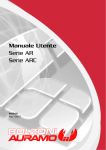
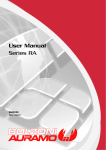

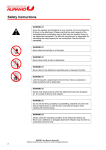

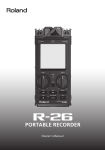
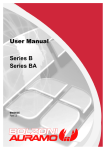
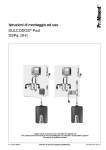
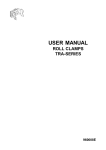
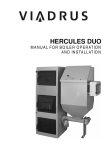
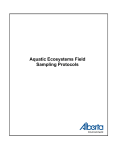

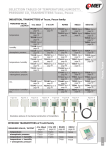
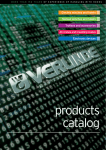
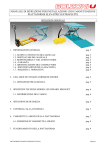
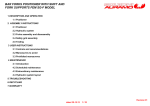
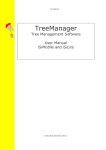

![English Manual AH-160C [Hardware & Software]](http://vs1.manualzilla.com/store/data/005931679_1-0c77ed47c849260a36e03decc8d56d96-150x150.png)
